California DMV Suspends Cruise Driverless Vehicle Permits

The California Department of Motor Vehicles (DMV) has suspended Cruise’s permit to operate driverless vehicles, citing public safety concerns.
This represents a major victory for the Alphabet-owned Waymo, as it’s now the only company within the state that’s legally allowed to offer robotaxi services. On Tuesday, the DMV said that Cruise’s suspension would take effect immediately with the company likewise stating that it would be pausing operations to examine potential improvements in how its vehicles operate.
With so much negative publicity surrounding Cruise, it’s actually a little surprising that action wasn’t taken sooner. Despite the California Public Utilities Commission’s controversial decision to allow the company to expand operations within the state, Cruise has seen San Francisco residents, public officials, and emergency services offering sustained criticisms.
Some of those issues overlap with the hurdles Waymo had to overcome while testing in Arizona. In fact, having gone through those technological growing pains may be the reason the DMV is only targeting Cruise. While there are still reports of Waymo’s autonomous vans occasionally acting erratically, most of the complaints in San Francisco have focused on Cruise vehicles.
One of the most recent incidents reportedly involved a pedestrian who was struck by another vehicle before being thrown in front of a Cruise robotaxi. But there have been dozens of other incidents where AVs failed to navigate construction areas, collided with city buses, ran over pets, impeded emergency vehicle responses, or were shut down temporarily after losing their WiFi connection.
Waymo doesn’t look to be having quite so many problems in California. But it has been operating autonomous test vehicles on public roads a little longer and there’s also been some speculation that Google (which is also owned by Alphabet) may be tweaking the algorithm to prioritize negative news about its competitor. While industrial espionage is hardly a new concept, that would be a pretty large risk for the company to take and there’s presently no evidence to support the claim.
Whatever the case, plenty of the bad press Cruise has been getting was unavoidable. On Tuesday, it attempted to explain what happened with the struck pedestrian, and the picture it painted was still pretty gruesome. Cruise stated that its AV “braked aggressively before impact because it detected a collision” taking place in the other lane. But it then attempted to pull over to avoid further damage and ended up dragging the pedestrian about 20 feet after having run them over.
The initial impact that tossed the victim in front of the vehicle is still said to be the fault of the mystery hit-and-run driver. But how the Cruise vehicle responded in the aftermath was less than ideal and presumably made things worse than they otherwise would have been.
With all AV companies operating under the premise that the implementation of their technology would eventually lead to an accident-free society, incidents like the above severely undermine the premise. Cruise has attempted to smooth things over by suggesting the incident was unavoidable as presented. But it has also asserted that there never would have been an accident if both vehicles were autonomous.
According to simulations run by the company, “had it been a Cruise AV rather than the human driver, the AV would have detected and avoided the pedestrian, and the pedestrian could have continued on their way.”
The California DMV seems unconvinced, however. The order of suspension issued on Tuesday stipulates that Cruise failed to disclose the full details of the incident to both it and the California Highway Patrol at a meeting held on October 3rd. It also appears to blame the company for how the AV responded — noting that the robotaxi "attempted to perform a pullover maneuver while the pedestrian was underneath the vehicle."
"The AV traveled approximately 20 feet and reached a speed of 7 mph before coming to a subsequent and final stop," it added. "The pedestrian remained under the vehicle."
This appears to be the final straw for the DMV and it revoked Cruise’s permits citing ongoing safety concerns and an overall lack of transparency. The department said that the manufacturer (which is owned by General Motors) was fielding vehicles that are not safe for public operation and “may lack the ability to respond in a safe and appropriate manner during incidents involving a pedestrian.”
Cruise has said the relevant meeting with the DMV included showing the complete video of the pedestrian strike multiple times. It also said the department was provided with a copy of that video, which was also shared with the California Public Utilities Commission and National Highway Traffic Safety Administration (the latter agency has launched its own investigation). Cruise said it remained in close contact with regulators and we also know of several media outlets who were given access to the video clip (which hasn’t yet been made publicly available) and determined that the AV may not have been able to avoid the pedestrian based on the surrounding circumstances.
That may also be the case for California’s DMV, which could explain why so much attention was given to the pedestrian being dragged after the secondary strike.
The DMV has said it supplied Cruise with a list of steps needed to apply to reinstate its suspended permits. However, it can continue operating AVs in California with safety drivers behind the wheel.
Ironically, no Cruise or Waymo driverless vehicle has been involved in any known pedestrian fatalities. In fact, the only death we’ve seen involved an Uber-owned autonomous test vehicle actually had a human safety driver. They were watching videos on their phone at the time of the crash.
California’s decision does not affect Cruise’s operations in Arizona or Texas. Those states also didn’t seem to share the problems the company has seen in California. This may simply be the result of the business having fielded more vehicles in San Francisco whereas its operations in Phoenix (where Waymo came into trouble) and Austin are comparatively smaller and more recent endeavors.
[Image: Cruise]
Become a TTAC insider. Get the latest news, features, TTAC takes, and everything else that gets to the truth about cars first by subscribing to our newsletter.

A staunch consumer advocate tracking industry trends and regulation. Before joining TTAC, Matt spent a decade working for marketing and research firms based in NYC. Clients included several of the world’s largest automakers, global tire brands, and aftermarket part suppliers. Dissatisfied with the corporate world and resentful of having to wear suits everyday, he pivoted to writing about cars. Since then, that man has become an ardent supporter of the right-to-repair movement, been interviewed on the auto industry by national radio broadcasts, driven more rental cars than anyone ever should, participated in amateur rallying events, and received the requisite minimum training as sanctioned by the SCCA. Handy with a wrench, Matt grew up surrounded by Detroit auto workers and managed to get a pizza delivery job before he was legally eligible. He later found himself driving box trucks through Manhattan, guaranteeing future sympathy for actual truckers. He continues to conduct research pertaining to the automotive sector as an independent contractor and has since moved back to his native Michigan, closer to where the cars are born. A contrarian, Matt claims to prefer understeer — stating that front and all-wheel drive vehicles cater best to his driving style.
More by Matt Posky
Latest Car Reviews
Read moreLatest Product Reviews
Read moreRecent Comments
- Peter Buying an EV from Toyota is like buying a Bible from Donald Trump. Don’t be surprised if some very important parts are left out.
- Sheila I have a 2016 Kia Sorento that just threw a rod out of the engine case. Filed a claim for new engine and was denied…..due to a loop hole that was included in the Class Action Engine Settlement so Hyundai and Kia would be able to deny a large percentage of cars with prematurely failed engines. It’s called the KSDS Improvement Campaign. Ever hear of such a thing? It’s not even a Recall, although they know these engines are very dangerous. As unknowing consumers load themselves and kids in them everyday. Are their any new Class Action Lawsuits that anyone knows of?
- Alan Well, it will take 30 years to fix Nissan up after the Renault Alliance reduced Nissan to a paltry mess.I think Nissan will eventually improve.
- Alan This will be overpriced for what it offers.I think the "Western" auto manufacturers rip off the consumer with the Thai and Chinese made vehicles.A Chinese made Model 3 in Australia is over $70k AUD(for 1995 $45k USD) which is far more expensive than a similar Chinesium EV of equal or better quality and loaded with goodies.Chinese pickups are $20k to $30k cheaper than Thai built pickups from Ford and the Japanese brands. Who's ripping who off?
- Alan Years ago Jack Baruth held a "competition" for a piece from the B&B on the oddest pickup story (or something like that). I think 5 people were awarded the prizes.I never received mine, something about being in Australia. If TTAC is global how do you offer prizes to those overseas or are we omitted on the sly from competing?In the end I lost significant respect for Baruth.
















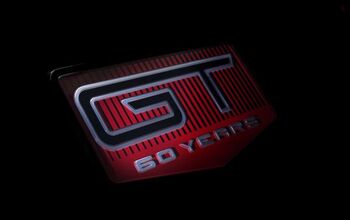




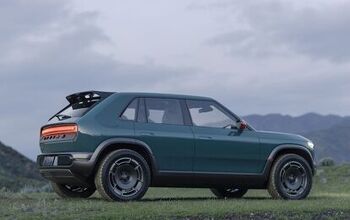




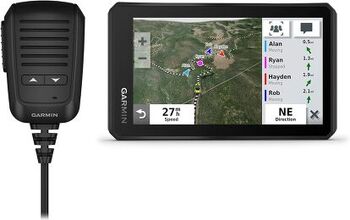
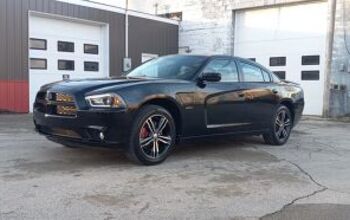

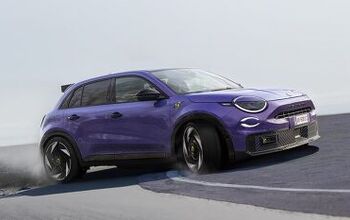
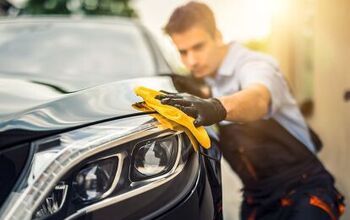



Comments
Join the conversation
Can California also be held liable for damage, destruction and death caused by autonomous vehicles they supply permits to? Or does "sovereign immunity" come into play?
Pull over Hal.
I'm sorry, Dave. I'm afraid I can't do that. This mission is too important for me to allow you to jeopardize it.